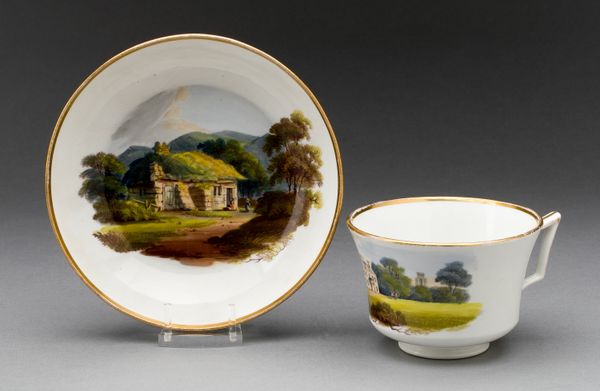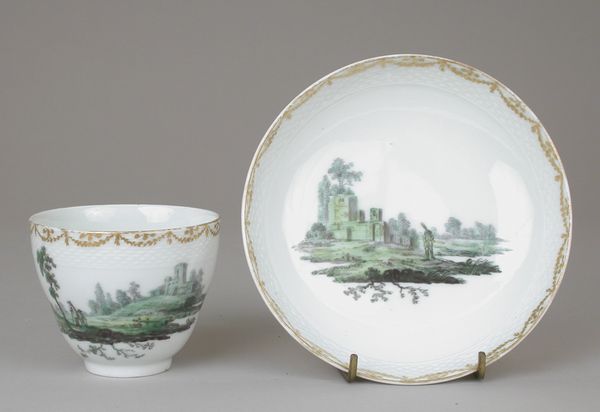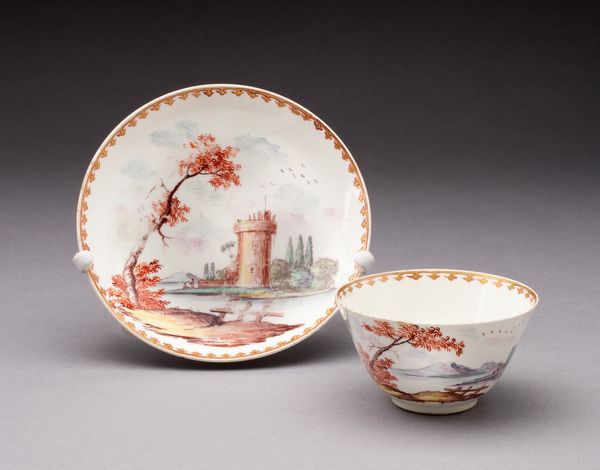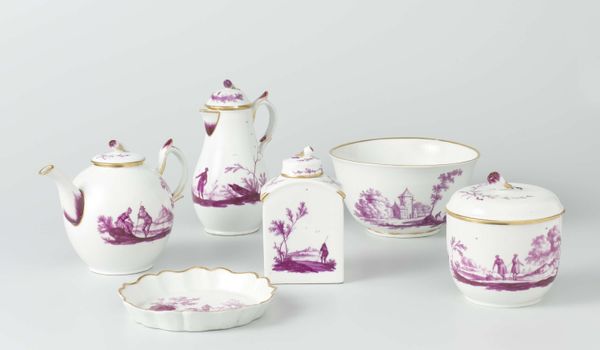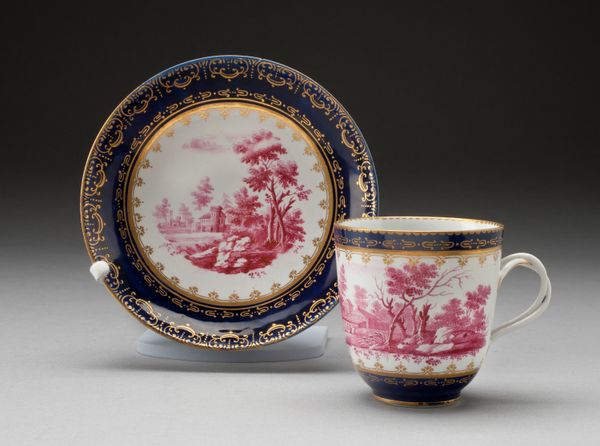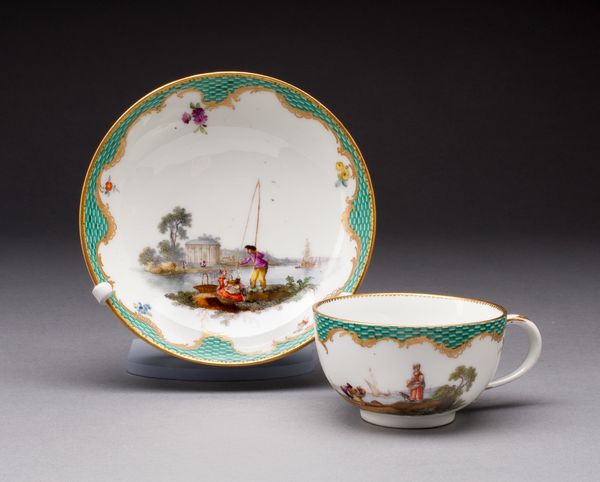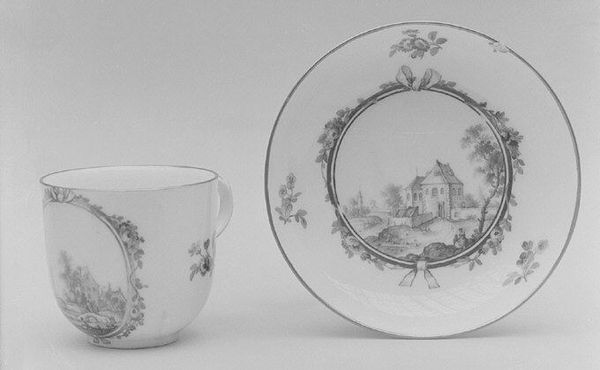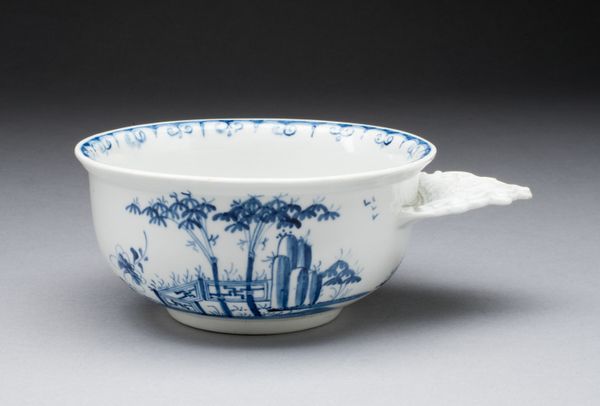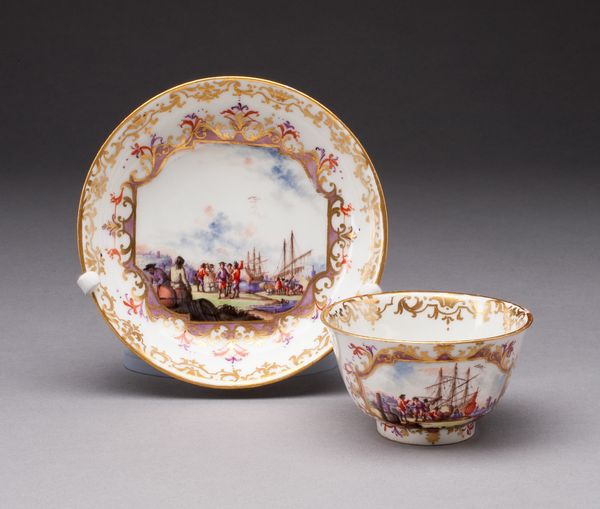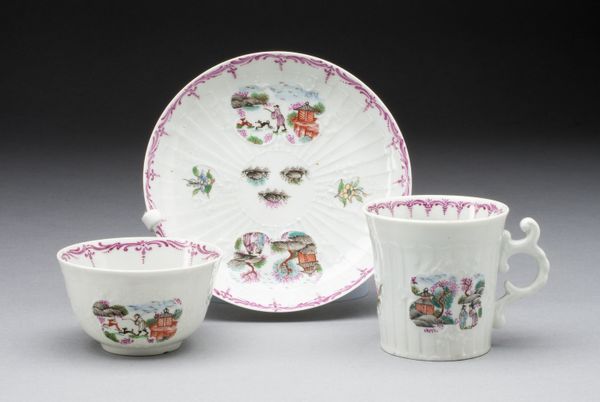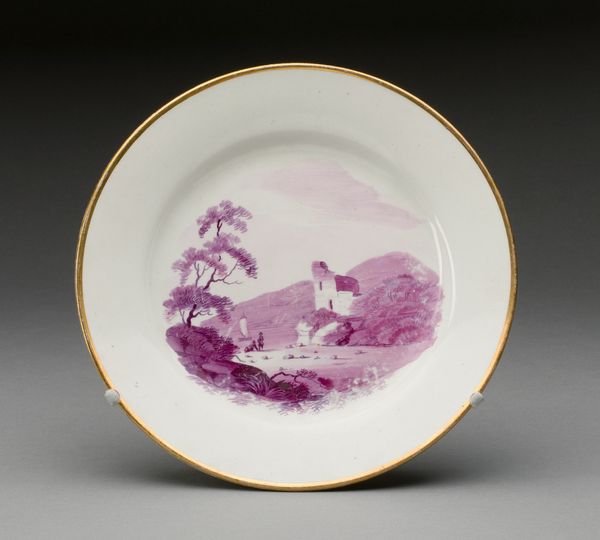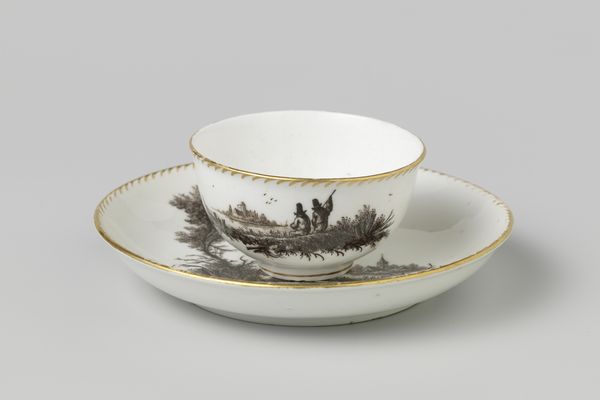
painting, ceramic, porcelain
#
painting
#
landscape
#
ceramic
#
porcelain
#
vessel
#
decorative-art
Dimensions: Cup: 7.1 × 12.1 cm (2 13/16 × 4 3/4 in.); diam. 10.2 cm (4 in.); Saucer: H. 3.5 cm (1 3/8 in.); diam. 15.6 cm (6 1/8 in.)
Copyright: Public Domain
Curator: Oh, the "Cup and Saucer," crafted around 1820 by the Wedgwood Manufactory. It’s porcelain with these lovely, almost dreamlike landscape paintings. It’s held at the Art Institute of Chicago. Editor: My first thought is elegance tinged with melancholy. That monochromatic mauve… it lends a sentimental air to the delicate porcelain. Almost like a faded photograph. Curator: Exactly. The cup and saucer weren’t just functional objects; they signaled status, access, and taste, inextricably intertwined with colonialism and the global networks through which raw materials, labor, and artistic styles circulated. Serving tea or coffee wasn’t merely a ritual; it was often a performance reflecting these social hierarchies. Editor: You’re right, and these landscape scenes become even more significant. The castle, the river...are they purely aesthetic, or are they evoking specific cultural associations? A longing for the picturesque past perhaps? They carry a symbolic weight within this performance. Curator: I think it goes deeper. These images reflect a cultural obsession with Romanticism. Landscape motifs held profound resonance for English society at the time, often idealized depictions that were presented at the expense of more marginalized elements of the time. We could certainly read them through a lens of power dynamics too. Editor: I agree; one can't ignore that lens. Beyond that, though, Wedgwood always intrigues me. How do these scenes mirror enduring human fascinations, the allure of idealized nature, architecture, the promise of travel? I sense echoes of longing. Curator: So, on one hand, these pieces serve as aesthetic expressions; and on the other, these artworks can represent how cultural objects encode the complexities of gendered labor, class, and global networks that structured artistic production during the early 19th century. Editor: Food for thought! Even something as seemingly simple as a teacup opens up a window to so much more. It encourages a richer sense of those times.
Comments
No comments
Be the first to comment and join the conversation on the ultimate creative platform.
